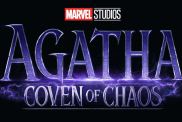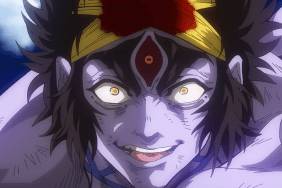
The claustrophobic, intense Angst ironically opens with a slow tracking shot that descends from high above, before hovering over a prison where the camera lingers. During the films sparse exterior scenes, the lens often remains perched, peering downyoud call it a Gods-eye-view, but doing so mistakenly implies that any God exists in this world of Angst.
It doesnt take long to disavow viewers of the notion: set almost entirely inside of the warped mind of an anonymous killer (Erwin Leder, credited merely as The Psychopath), the film charts his release from a ten-year sentence and his swift return to violence for a savage home invasion, here captured in excruciatingly intimate detail. Many films before and since have hinged on similar scenarios, but few have considered what it means to be legitimately invasive.
Both director Gerald Kargl and cinematographer/co-writer Zbigniew Rybczynski set themselves exclusively to the task here. They dont simply dig deep into the mind of a killer (whose constant internal monologue represents 90% of the films dialogue)they practically shove the audience right into it with intrusive camerawork that rarely leaves its orbit.
Utilizing a clever rig that essentially tethered actors to the camera, Rybczynski often pushes into some uncomfortable, disquieting places. Before The Psychopath settles on a nearby house, he stops by a diner, where he spies a couple of disconcertingly young girls. Seemingly assuming the killers position, the cameras close-ups reduce these targets to body parts: a pair of lips, a pair of eyes, all of which drive the Psychopath into a frenzy.
Once the camera returns to him, hes furiously chomping down on a sausage. Each biteas is the case with other repetitive sounds throughout the filmis magnified to an unnerving level. Likewise, his manic, bugged-eyed face engulfs the frame as he stuffs his mouth and describes the homicidal urges simmering within. Before he even engages in any actual violence, hes a repulsive figure whose gross, ravenous eating habits anticipate the messy savagery of his later exploits.
Incongruity defines his violent deeds, as Angst is an impossibly alluring and beautiful film about pure ugliness: Rybczynskis smooth photography allows audiences to glide alongside The Psychopath while an electronic score pulses rhythmically beneath his assured monologues. Throughout the film, he recounts previous encounters with a clinical expertise of a seasoned criminal, but his actions reveal an edgy, almost childlike figure who can barely conduct himself.

His first attempt to shatter the glass in order to break into the house fails rather pointedly, and his eventual attempts to quell and murder the inhabitants is a rough affair with a jagged rhythm: one minute, hes concerned with tying the daughter (Sylvia Rabenreither) to a doorknob, the next hes trying to strangle the mother (Edith Rosset) into unconsciousness (when he accidentally goes too far, his only regret is that he wasnt able to torture her more).
In this respect, Angst is a stark contrast to its slasher contemporaries, particularly its American counterparts that were clogging theaters and video store shelves by 1983. Many (if not most) of these films carry a pretense of trashy entertainment, their acts of violence meant to be repulsive in the same way a roller coaster might cause one to vomit. The surface level aesthetic of Angst initially suggests a similar thrill ride, but its style deceptively conceals an utter rawness lurking beneath. It perhaps compares with the grit and grime of Henry: Portrait of a Serial Killer, only its realized with the heightened style of a giallo.
Despite the bravura techniques guiding its movements, Rybczynskis camera doesnt aim to delight audiences; instead, it seems only concerned with capturing The Psychopaths disturbing ecstasy as he plunges deeper into his own psychosis. A particularly gruesome encounter climaxes with a wild arterial spray (achieved with actual pigs blood, per Rabenreither) that doubles as a metaphorical money shot that washes over him in orgasmic fashion (a later shot where his pants have been removed while mounting a corpse make it quite a literal one).
Unlike the more commercial slashers of the era, Angst lingers on violence, with each deadly episode proving to be messier and more unhinged than the last. Always captured with suffocating close-ups, death is neither quick nor painless, and The Psychopaths preoccupation with his victims doesnt end with the act itself. In arguably the films most disturbing turn, he decides to claim their corpses as souvenirs during a sequence that has him wallowing in the crime scene as he dryly reveals future plans for them. All the while, a dog (Rybczynskis own, giving an improved performance, according to the DP) innocently trots through the scene, making it all the more uncanny and banal all at once.
The banality of evil is foregrounded here, even as its set against a stylish backdrop that always seems to be calling attention to the films artificiality. Such a disconnect mirrors The Psychopaths mind, which is a patchwork of clichés stitched out of pop psychology staples: an abusive childhood, mother issues (an attempted matricide led to an earlier incarceration), step-father issues, a brief stint in a monastery that went awry after he tortured animals, etc. Angst feels like his confessional, with each detail attempting to account for his violent urges.
On the other hand, denial is in equal supply: even as he reveals the intimate details of his life (including his first sadistic sexual encounter with an older woman), the audience remains at a remove. Like the camera, were chained to him but are only afforded the wild-eyed glimmers of madness that possess Leders boyish face, which takes on the same manic electricity as Klaus Kinskis most deranged turns.
Peering into his feverish eyes reveals more than his clinical recollections ever could, and its in these moments that we glimpse an evil that cant be codified with familiar terminology. That hes only known as the psychopath is apt: heres a term that plays at some sort of scientific explanation but has been abused as a catch-all for deviant behavior. Ultimately, theres no explaining what we see unfold here.
Just as the camera dazzles with its style, so too does Leder twist and contort with a theatricality that belies his coarse outburstseven the films title rolls bluntly and unpleasantly off of his tongue whenever he discusses the fear he hopes to inspire. His killer is an indelible yet enigmatic figure, one who presumes to slither through fits of violence when he actually stumbles through them quite clumsily; ultimately, Angst dares to take a darkly humorous turn once his grand schemes begin to unravel, at which point it even reserves a modicum of sympathy for this devil, who at least claims he has no conscious desire to commit his horrible acts.

Considering Angst was inspired by all-too-true events (some of which unfolded merely a year before it was produced), it predictably appalled officials, who quickly had it censored and banned. Doing so was a more appalling act, of course, especially since it underestimated the incredible craftsmanship at work here. Rybczynskis appearance at a recent screening held by LAs Cinefamily confirms as much: in his own unique, somewhat scatterbrained fashion, he described the rigorous camera setup, which involved him hanging upside down and employing members to achieve the films signature style.
Despite its grislyif not basematerial, Angst provided a natural sandbox for the cinematographerwho has always been at the forefront of technology, having been among the first to shoot in HD back in the mid-80sto experiment. As his short films and music videos attest, he is drawn to experimentation, and Angst is a remarkable feat: somehow, its both more raw and more polished than any film of its type (if, indeed, anything can even be considered its typetruly, it should only be lumped in with other 80s splatter films out of convenience and shorthand).
Far from an exercise in empty gimmickry, however, Angst is a haunting experience that tasks viewers with riding shotgun during a madmans joyride. As we hover with him for 75 discomforting minutes, it becomes increasingly clear that Kargl, Rybczynski, and company have crafted an out-of-body experience where the lens disconnects from reality as it simultaneously thrusts it into our faces one corpse at a time. Whenever the camera returns to the skies, you sense a longing to escape; however, much like The Psychopath himself, it cant help but return to indulge in violence it finds to be both abhorrent and exhilarating.
When introducing Angst at Cinefamily, Rybczynski intoned the virtue of patience: just because a film is initially received with disgust doesnt mean a later generation cant come around and rescue it. Time has proven this to be true, as Angst is currently screening nationwide after toiling in obscuring for 30 years. A Blu-ray release from Cult Epics will also be released on August 18th, and will sport a newly restored transfer alongside several supplements featuring the cast and crew.
—
Brett Gallman is a member of the Online Film Critics Society. He was raised in and around video stores and hasnt stopped talking about horror movies ever since. You can find him on Twitter @brettgallman.







